On the afternoon of July 31, 2020 the world of invertebrate biology and marine ecology in California lost a giant in our field. Professor Emeritus John S. Pearse died after battling cancer and the aftereffects of a stroke.
John was one of the very first people I met when I came to UC Santa Cruz. Before we moved here, my husband and I came and met with John, who was not my official faculty sponsor but agreed to show us around so we could check out different areas for a place to live. In fact, I had applied to the department to do my graduate work in John’s lab, but because he was considering retirement the department wouldn’t let him take on a new Ph.D. student. But when we needed some help getting acquainted with Santa Cruz, John and his wife, Vicki Buchsbaum Pearse, graciously let us stay at their house and spent a day driving us around town and showing us eateries as well as potential neighborhoods.
By happenstance we ended up living down the hill from John and Vicki. We had met their blue duck, Lily, and I used to fill spaghetti sauce jars with snails from our tiny yard and trudge up the hill to feed them to her. She gobbled them up like they were her favorite treat.
As one of the regional experts in invertebrate biology, John was on all of my graduate committees. There were always a half-dozen or so of us grad students working with invertebrates, and we all tended to hang out together. John was one of the things we shared in common. And even if he wasn’t technically on one’s committee, he would always be available for consultation or advice as needed.
When John retired, he didn’t leave the campus. He remained a presence at the marine lab, and still did field work. He started incorporating young students in his long-term intertidal monitoring research, which morphed into the LiMPETS project. The combination of working with students while producing robust scientific data was the perfect distillation of John’s legacy. He said this about LiMPETS:
This is one of the best things I could ever do to enhance science education and conservation of our spectacular coastline. Working with teachers and their students is a wonderful and fulfilling experience.
John S. Pearse, Professor Emeritus
UC Santa Cruz
The last time I saw John was in the summer of 2019, during his annual Critter Count. He started these Critter Counts back in the 1970s, monitoring biota at two intertidal sites in Santa Cruz. These sites have since been incorporated into the LiMPETS program. I’m sure it made John smile whenever he thought of generation after generation of schoolkids traipsing down to the intertidal with their quadrats and transect lines, counting organisms the way he had for so many years.
When I started teaching my Ecology class, John suggested that I take the students out to Davenport Landing to monitor at the LiMPETS site there. That is another of his long-term sites, and he was worried about losing information if it were not sampled at least once a year. My students have done LiMPETS monitoring three years now, and John accompanied us on at least two of those visits. I tried to impress upon the students that having John Pearse himself come out with us was a Big Deal, but am not sure I was able to convince them of how fortunate they were. I bet there are a lot of marine biologists in California who would dearly love to go tidepooling with John. And now no one else will.
John Pearse and Todd Newberry, the other professor who gets the blame for how I think about biology, taught an Intertidal Biology class. I came along on many of the field trips the last year they taught it. I remember getting up before dawn to drive down to Carmel, park in the posh neighborhood streets, and walk down to meet John and Todd in the intertidal. I remember slogging through the sticky mud at Elkhorn Slough, digging for Urechis and hearing John shout “It’s a goddamned brachiopod!” from across the flat. I remember bringing phoronid worms back to the lab, looking at them under the scope, and watching blood flow into and out of their tentacles. I remember John taking an undergraduate, Jen, and me out to Franklin Point, and showing me my very first staurozoans. That was probably around 1996, and I’m still in love with those animals.
I’m no John Pearse or Todd Newberry, but I’m a small part of their giant legacy in this part of the world. I strive to instill in my students the joy and intellectual pleasure in studying the natural world that I inherited from John and Todd. Partly to honor them, but mostly because it suits my own inclinations, I’m on a one-woman crusade to bring natural history back into modern science and science education.
I’ve spent the last two mornings in the intertidal at two of the LiMPETS sites, as part of a personal tribute to John. I thought there would be no greater way to memorialize John than by spending some quality time in the intertidal, where he trained so many young minds. I was thinking of him as I took photos, and thought he would be pleased if I shared them.
Natural Bridges—4 August 2020
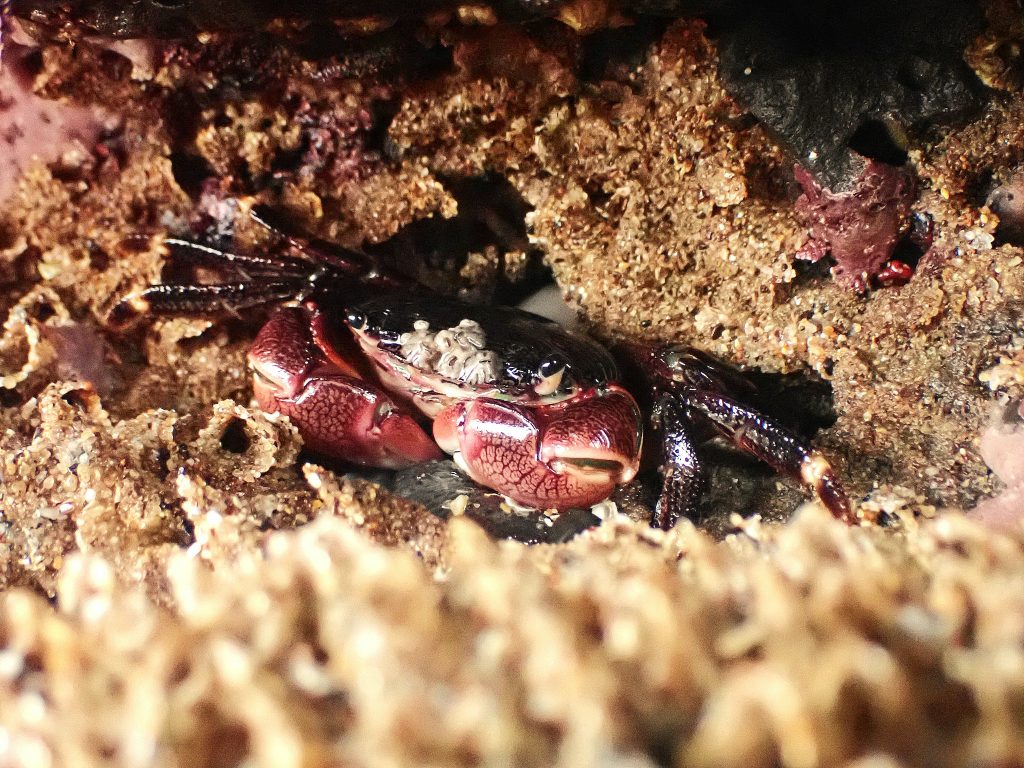
2020-08-04
© Allison J. Gong
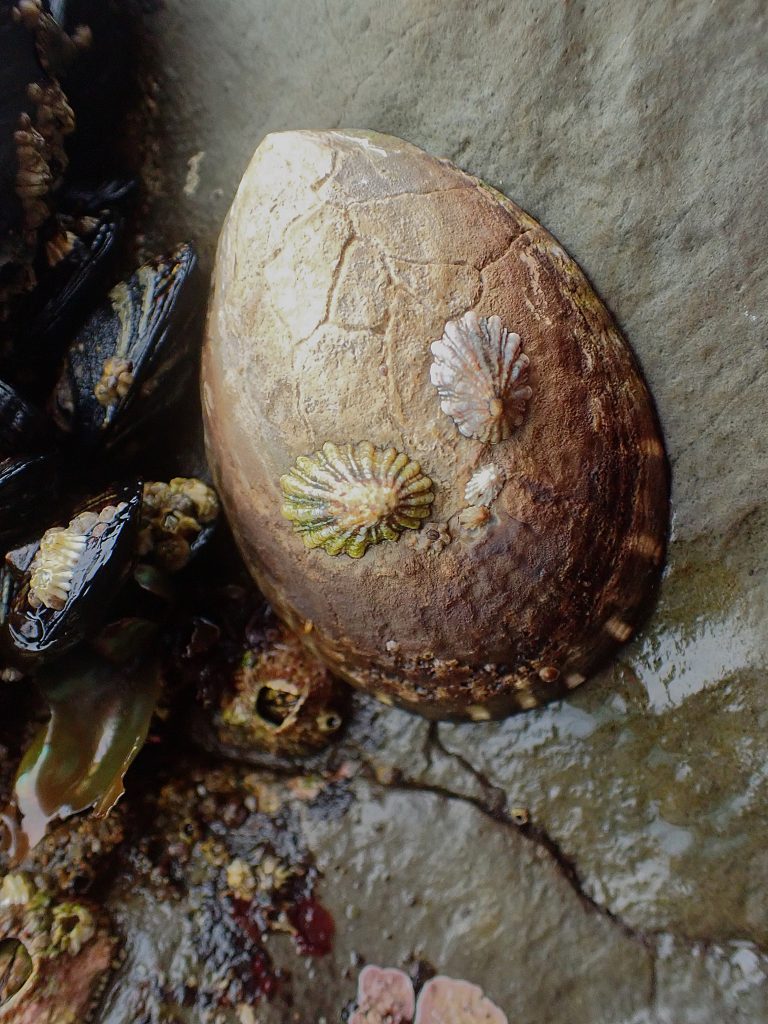
2020-08-04
© Allison J. Gong
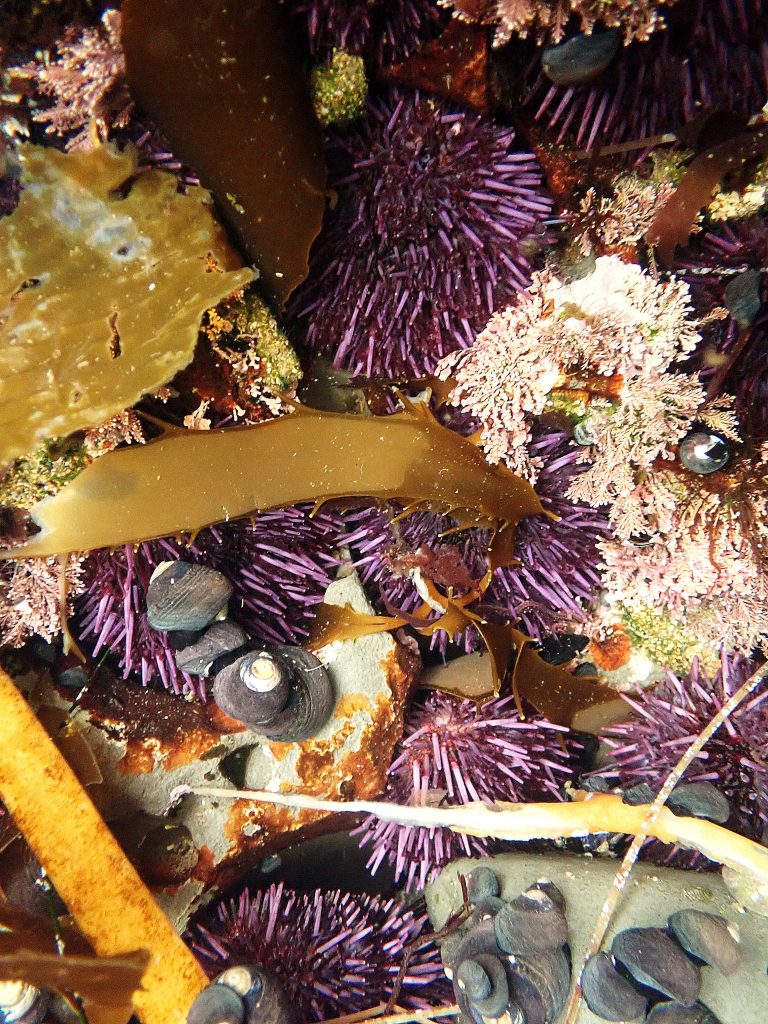
2020-04-08
© Allison J. Gong
And because, like me, John had a special affinity for the anemones:
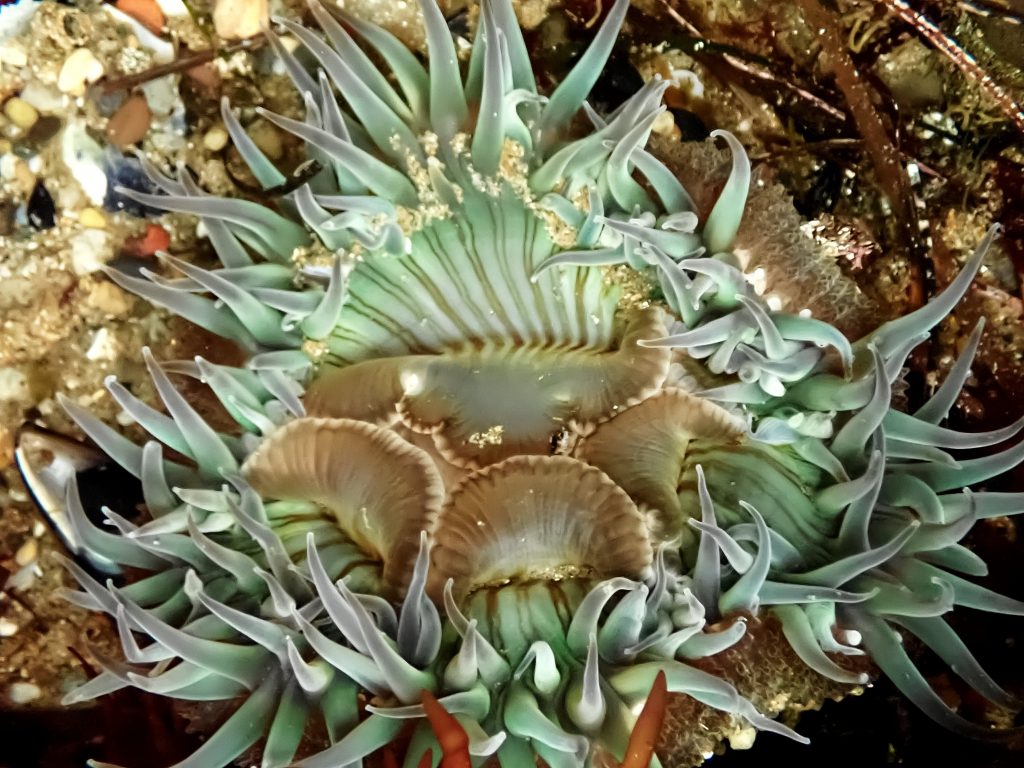
2020-08-04
© Allison J. Gong
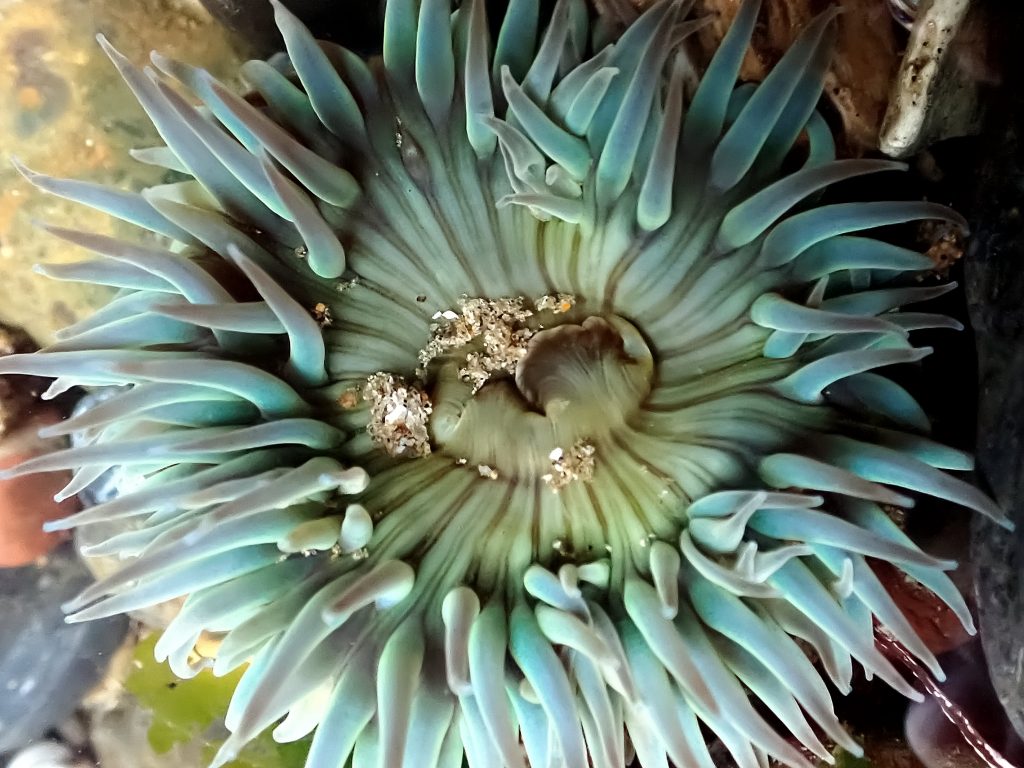
2020-08-04
© Allison J. Gong
And he would have loved this. What is going on here? How did this pattern come to be?
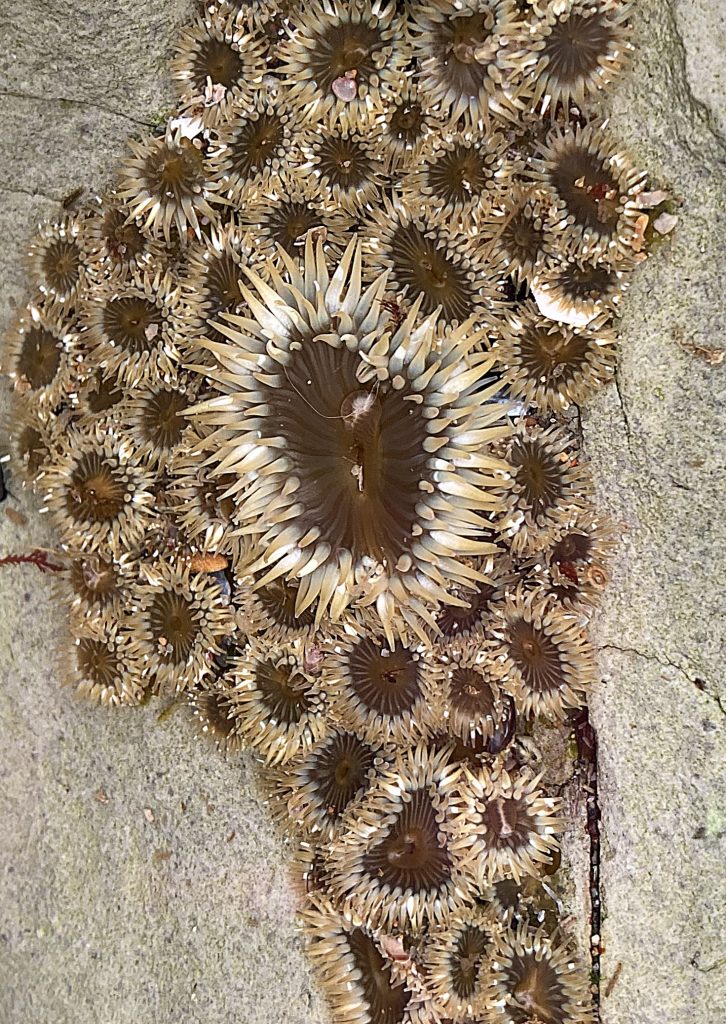
2020-08-04
© Allison J. Gong
And look at this, three species of Anthopleura in one tidepool! Can you identify them?
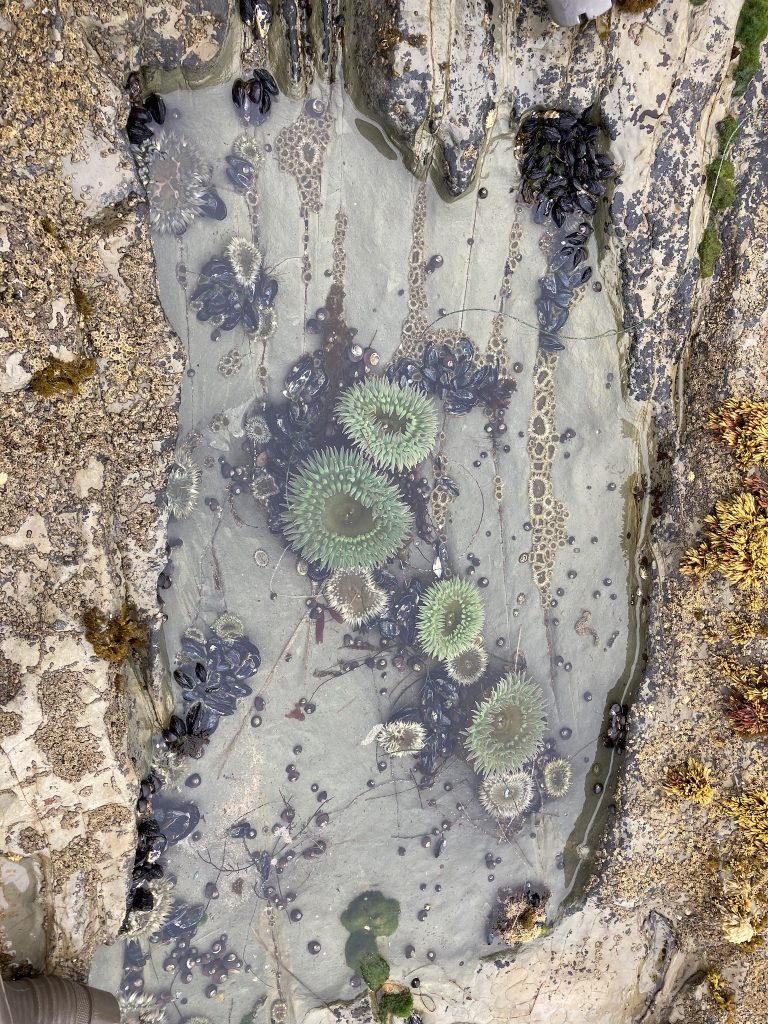
2020-08-04
© Allison J. Gong
Davenport Landing—5 August 2020
It was windy and drizzly this morning. I ran into a friend, Rani, and her family out on the flats; they were leaving as I arrived. I hadn’t seen her since before the COVID-19 lockdown began back in March. She was also visiting the tidepools to honor John Pearse. We chatted from a distance and exchanged virtual hugs before heading our separate ways.
It felt like a John Pearse kind of morning. I recorded the video clip I needed for class, collected some algae and mussels for a video shoot tomorrow, and took a few photos.
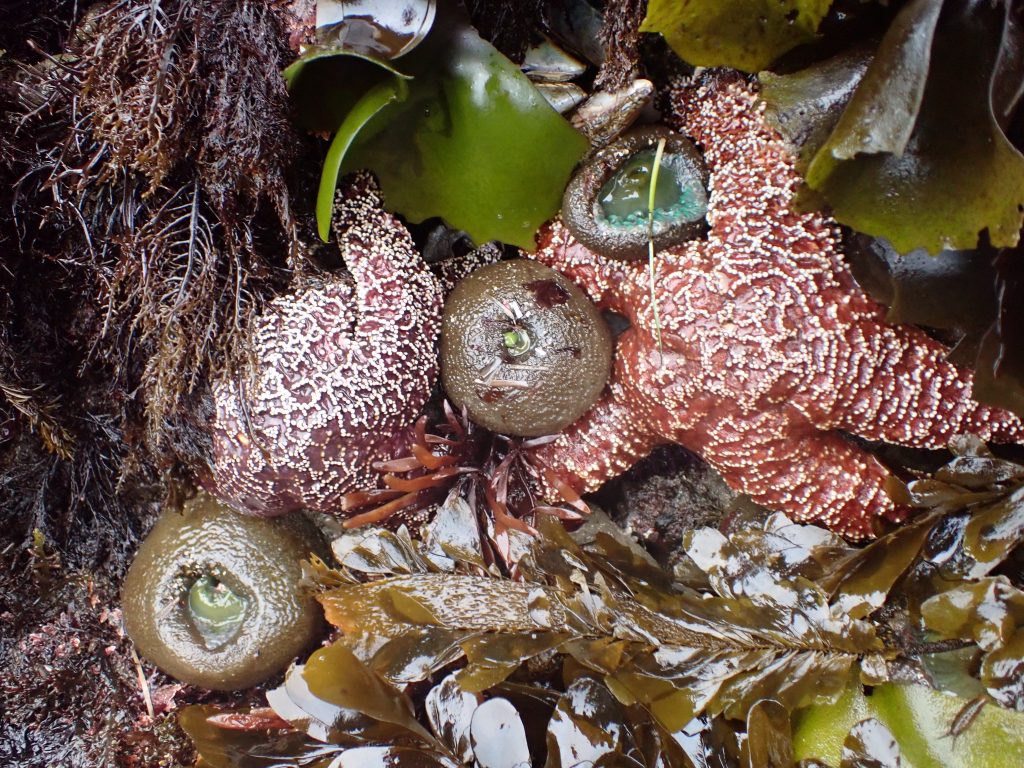
2020-08-05
© Allison J. Gong
And even though I’m not very good at finding nudibranchs, even I couldn’t miss this one. It was almost 4 cm long!
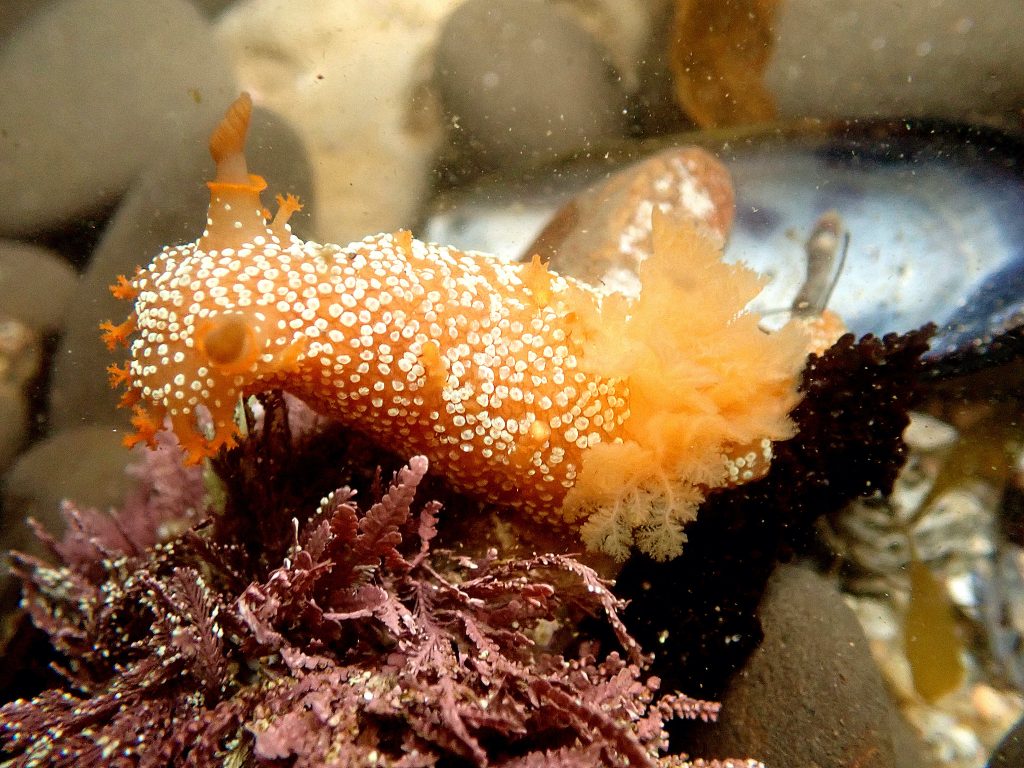
2020-08-05
© Allison J. Gong
The ultimate prize for any tidepool explorer is always an octopus. When I take newbies into the field that’s what they always want to see. I have to explain that while octopuses are undoubtedly there and common, they are very difficult to find. You can’t be looking for them, unless you really like being frustrated.
But John must have been with me in spirit this morning, because I found this:
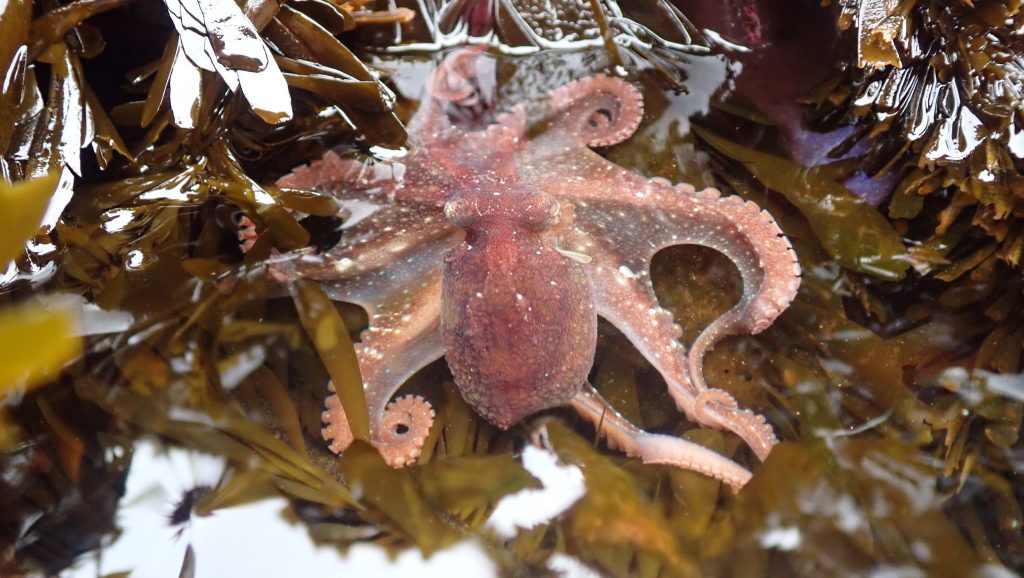
2020-08-05
© Allison J. Gong
It was just a small one, with the mantle about as long as my thumb. I found it because I spotted something strange poking out from a piece of algae. It was the arm curled with the suckers facing outward. I touched it, and the arm retracted. It didn’t seem to like how I tasted.
And lastly, for me this is the epitome of John Pearse’s legacy: Working in the intertidal, showing students how to identify owl limpets. I hope they never forget what it was like to learn from the man who with his wife, literally wrote the book about invertebrates and founded LiMPETS.
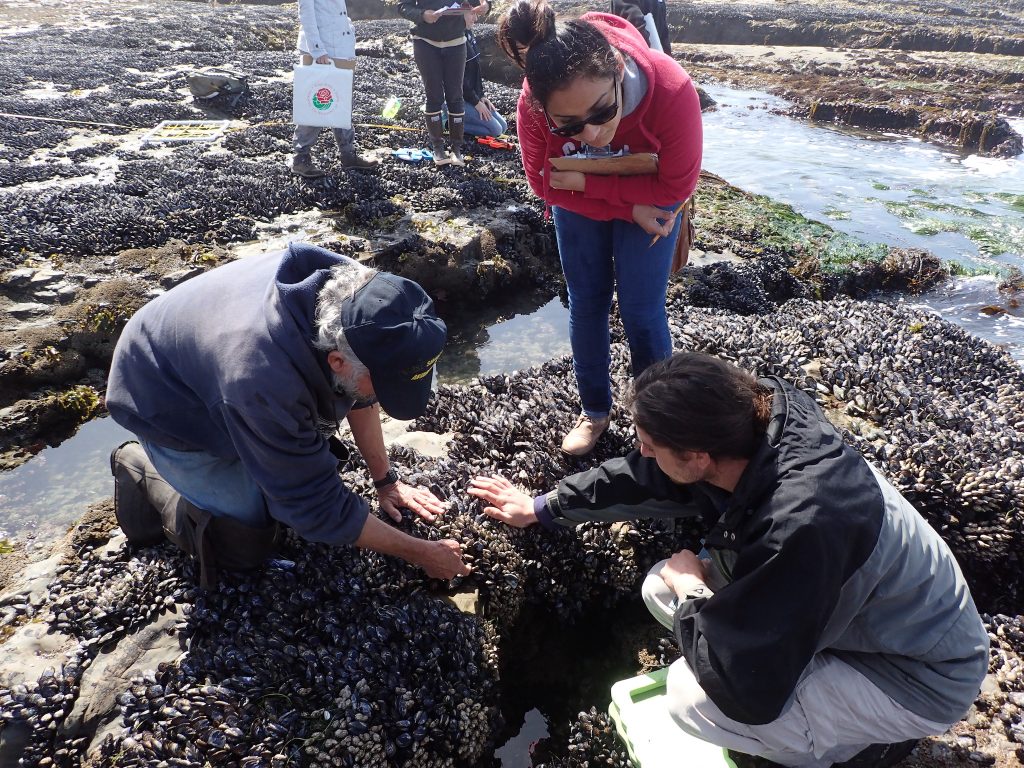
2016-04-29
© Allison J. Gong
RIP, John S. Pearse. You left behind some enormous shoes to fill and a legacy that will stretch down through generations. I count myself lucky to have spent time with you in the field and in the lab. While I will miss you sorely, it is my privilege to pass on your lessons. Thank you for all you have taught me.

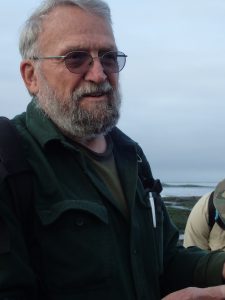
So very sorry to hear about John’s passing. Thanks for sharing with others why he’ll be missed, and thanks to you for getting your students out into the tidepools, and encouraging their exploration and study of natural history.
How are you doing, Chris? I hope you are well. Yes, John will be missed by so many people. It has been amazing to see the tributes from his former students and colleagues. He really was a giant.
That red octopus! My goodness, he really wanted you to watch for a while. ASIDE: And how steady you film with one hand (while touching the octopus with the other); so impressive!
Thank you for the link to LiMPETS, too. I’ve made a donation to help carry on Dr. Pearse’s work.
Thank you so much for donating to LiMPETS, Trish! Your generosity will help school children get to do real science.
Allison, Thank you for your post. It broadens the fabric that helps us mend the tear.
Best,
Bill Wright